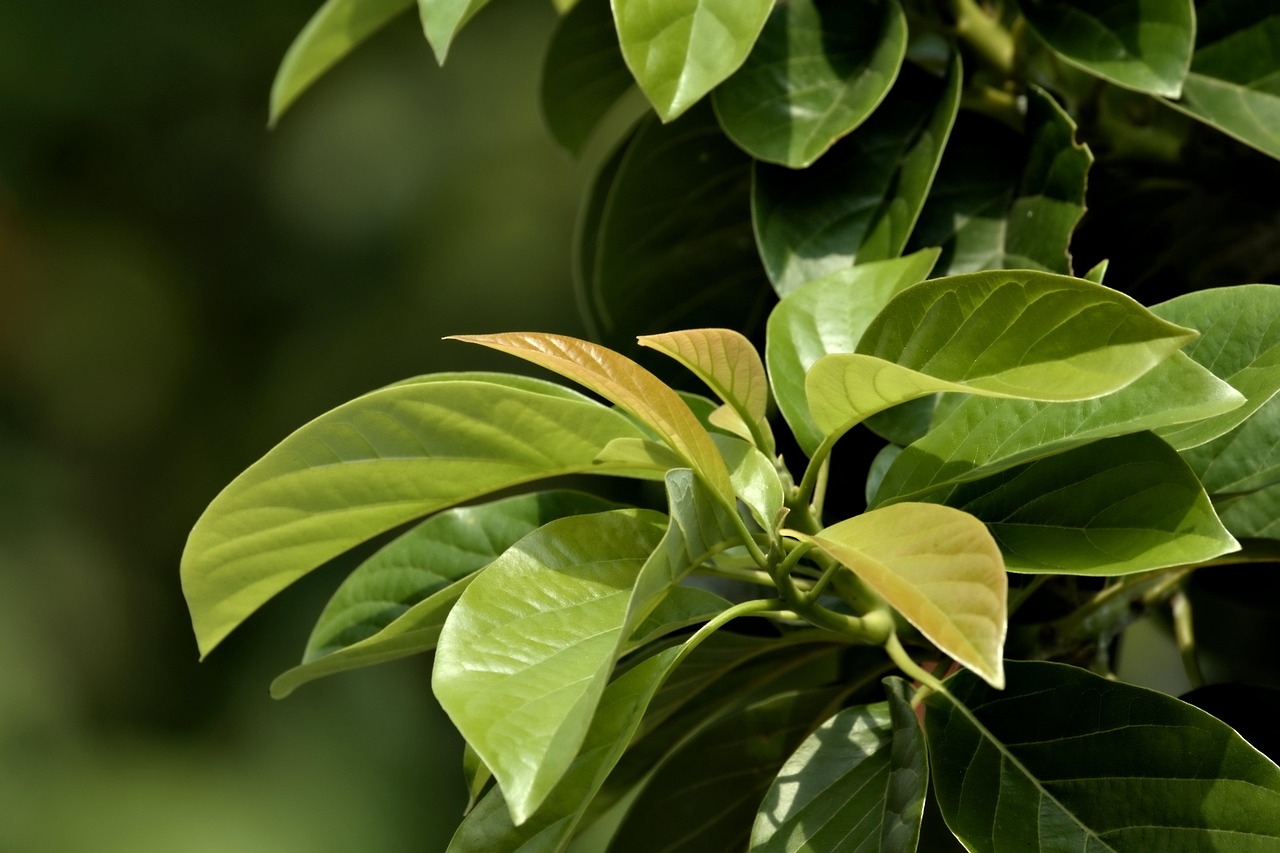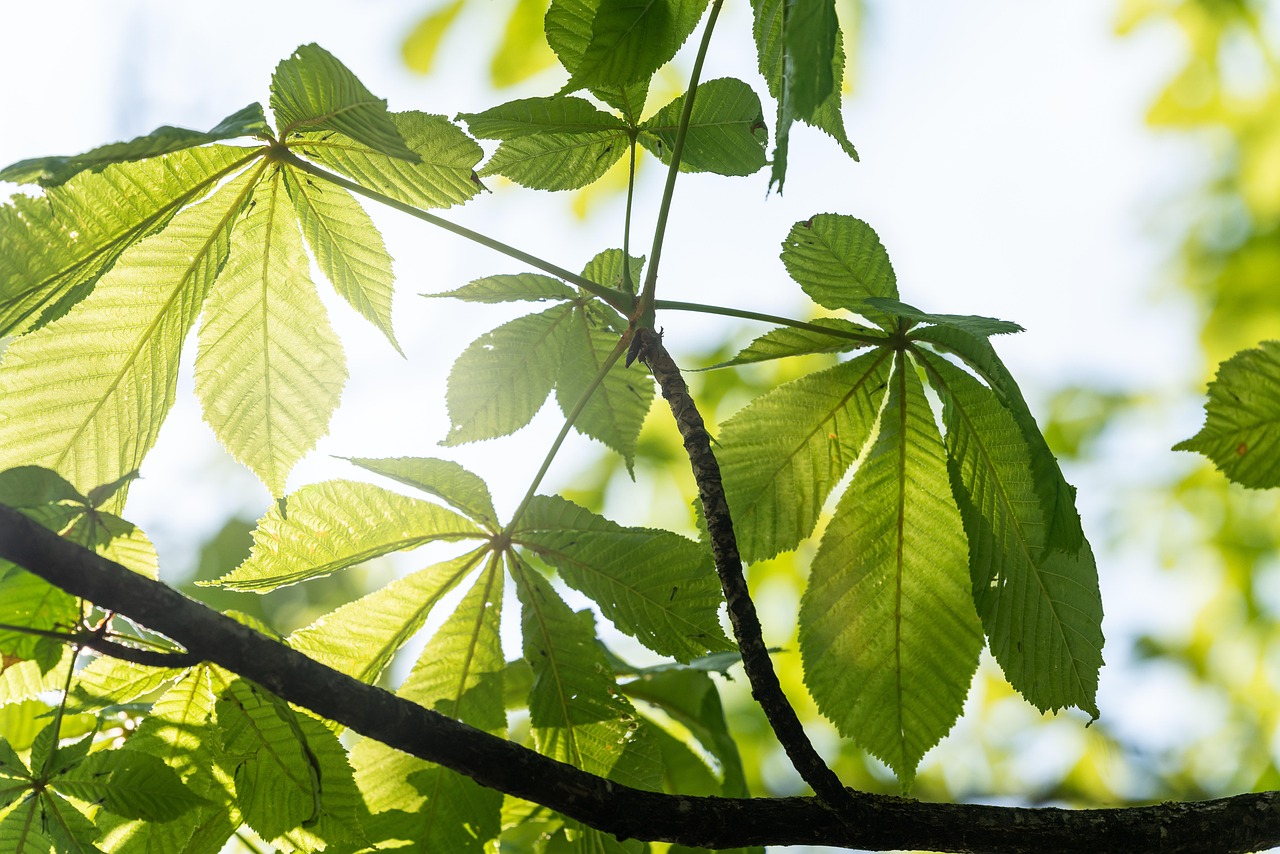Tree growth rates significantly impact ecosystem services by influencing carbon sequestration, biodiversity, water regulation, and soil health. Faster-growing trees can enhance these services, while slower-growing species may limit ecosystem resilience and functionality.
Trees play a crucial role in maintaining ecological balance. Their growth rate can directly affect various ecosystem services that are vital for environmental health and human welfare. Ecosystem services include the benefits that humans derive from nature, such as clean air and water, climate regulation, and habitat for wildlife. Understanding how tree growth rates influence these services is essential for effective forest management and conservation strategies.

Different tree species exhibit varying growth rates due to genetic, environmental, and climatic factors. Fast-growing species may quickly provide benefits like shade and timber, while slower-growing species often contribute to long-term ecosystem stability. As forests are managed for multiple purposes, including timber production and conservation, recognizing the implications of growth rates becomes increasingly important.
Key Ecosystem Services Influenced by Tree Growth Rates
The impact of tree function growth rates can be observed across several key ecosystem services:
- Carbon Sequestration: Trees absorb carbon dioxide during photosynthesis, helping to mitigate climate change. Faster-growing trees generally sequester more carbon over shorter periods.
- Biodiversity Support: Diverse tree species support various wildlife habitats. High growth rates in certain species can create diverse habitats quickly.
- Water Regulation: Trees regulate water cycles through transpiration and watershed management. Growth rates affect the amount of water utilized or released back into the environment.
- Soil Health Improvement: Tree roots enhance soil structure and fertility. Different growth rates influence how quickly soil health can be restored or maintained.
In addition to the direct impacts on ecosystem services, tree growth rates can also influence the surrounding flora and fauna. For instance, fast-growing trees may dominate an area, potentially outcompeting slower-growing species and altering the local biodiversity. This dynamic can have far-reaching effects on ecosystem stability and resilience.

Factors Affecting Tree Growth Rates
Several factors contribute to the variation in tree growth rates, impacting their ability to provide ecosystem services:
- Species Type: Different species have inherent growth characteristics. For example, species like poplar and eucalyptus tend to grow faster than oaks and pines.
- Soil Quality: Nutrient-rich soils promote faster growth. Poor soil conditions can stunt tree development.
- Climate: Temperature and precipitation levels directly affect tree growth. Warmer temperatures may enhance growth, while drought conditions can impede it.
- Competition: The presence of other vegetation can limit resources available to trees. High competition may slow growth rates significantly.
The complexity of these factors highlights the need for careful management in forestry practices. By selecting suitable tree species for planting based on local conditions, foresters can optimize growth rates and maximize ecosystem service benefits.
The Role of Fast-Growing Trees in Ecosystem Services
Fast-growing trees are often prioritized in reforestation efforts aimed at enhancing ecological functions. These trees can quickly restore habitats, improve air quality, and contribute to carbon storage. However, while their rapid growth is beneficial, it is essential to consider potential trade-offs.

For instance, fast-growing species may not provide the same level of habitat complexity as slower-growing trees, which can support a wider range of wildlife. In addition, fast-growing trees may require more water and nutrients, potentially leading to resource depletion in some environments.
The careful selection of fast-growing species must therefore balance the immediate benefits with the long-term health of the ecosystem. Sustainable practices that integrate both fast and slow-growing trees can lead to resilient landscapes that provide diverse ecosystem services over time.
In summary, tree growth rates significantly impact ecosystem services through their effects on carbon sequestration, biodiversity, water regulation, and soil health. Understanding these dynamics is crucial for informed decision-making in forestry and conservation efforts.
Impacts of Tree Growth Rates on Carbon Sequestration
Carbon sequestration is one of the most critical ecosystem services provided by trees. As trees grow, they absorb carbon dioxide from the atmosphere and store it in their biomass. This process helps mitigate climate change by reducing greenhouse gas concentrations. Understanding how growth rates influence this function is essential for effective climate action.

Fast-growing trees can sequester significant amounts of carbon in a shorter time frame compared to slower-growing species. The following factors contribute to the efficiency of carbon sequestration:
- Biomass Accumulation: Faster growth results in increased biomass, leading to higher carbon storage. For example, a young tree can sequester more carbon annually than an older, slower-growing tree.
- Age and Size: Larger trees store more carbon due to their greater biomass. However, younger trees sequester carbon at a faster rate, particularly in their early growth stages.
- Species Selection: Species such as poplar and willow are known for their rapid growth and high carbon sequestration potential. Selecting these species for reforestation can enhance carbon storage efforts.
The Role of Tree Diversity in Ecosystem Services
Diversity within tree populations plays a vital role in enhancing ecosystem resilience and functionality. Different species contribute uniquely to ecosystem services, and their varied growth rates can influence overall forest health and productivity.
Here are some key aspects of how tree diversity relates to growth rates:
- Habitat Variety: Diverse tree species create multiple niches for wildlife. A mix of fast and slow-growing species can provide habitats that support various organisms throughout their life cycles.
- Pest and Disease Resistance: Monocultures of fast-growing species may be susceptible to pests and diseases. A diverse forest can mitigate these risks and promote overall ecosystem health.
- Soil Health: Different tree species have varying root structures. This diversity enhances soil structure, nutrient cycling, and moisture retention, which supports healthy forest ecosystems.
Water Regulation and Tree Growth Rates
Trees play a crucial role in managing local water cycles. Their growth rates influence how much water is absorbed, transpired, and eventually returned to the atmosphere. Understanding this relationship is vital, especially in water-scarce regions.
The following points highlight the connection between tree growth rates and water regulation:
- Transpiration Rates: Fast-growing trees typically transpire more water, contributing to increased humidity and precipitation patterns. This can enhance local microclimates.
- Groundwater Recharge: Trees with extensive root systems help facilitate groundwater recharge by allowing rainwater to penetrate the soil effectively. Faster-growing species may develop these systems more rapidly.
- Soil Moisture Retention: The root structures of trees affect soil moisture levels. Trees that grow quickly may also improve soil porosity, enhancing moisture retention during dry periods.
Soil Health and Tree Growth Rates
The interaction between tree growth rates and soil health is another critical aspect of ecosystem services. Healthy soil supports tree growth and overall forest productivity, creating a beneficial cycle.
Key factors regarding soil health influenced by tree growth rates include:
- Nutrient Cycling: Fast-growing trees often require significant nutrients to sustain their rapid growth. This demand can stimulate nutrient cycling in the soil, benefiting surrounding vegetation.
- Erosion Control: Trees with robust root systems stabilize soil and reduce erosion. Fast-growing trees can establish these systems quickly, protecting the land from degradation.
- Organic Matter Contributions: As trees shed leaves and branches, they contribute organic matter to the soil. Faster-growing species produce more biomass, enhancing soil fertility over time.
Understanding these dynamics is essential for land management practices aiming to enhance ecosystem services through tree planting and conservation efforts. By considering both growth rates and species diversity, we can foster healthier forests that support climate resilience and biodiversity.
Economic Impacts of Tree Growth Rates on Ecosystem Services
Tree growth rates not only affect ecological functions but also have significant economic implications. The services provided by trees can lead to direct financial benefits for communities and industries. Understanding these economic impacts can help in making informed decisions regarding forestry practices and land management.
The following points highlight the economic aspects tied to tree growth rates:
- Timber Production: Fast-growing species can be harvested more quickly, providing a quicker return on investment for timber producers. This can stimulate local economies and create jobs in forestry and related industries.
- Carbon Credits: Forests that sequester carbon contribute to carbon credit markets. Faster growth rates can enhance carbon storage potential, making it possible for landowners to participate in carbon trading schemes, thus generating revenue.
- Tourism and Recreation: Healthy, diverse forests attract tourists and recreation enthusiasts. Areas with fast-growing trees can quickly develop aesthetic value, supporting local tourism businesses.
Tree Growth Rates and Urban Ecosystem Services
Urban areas benefit greatly from trees, often referred to as urban forests. The growth rates of tree species in these settings can significantly impact various ecosystem services essential for urban living.
Key urban ecosystem services influenced by tree growth rates include:
- Air Quality Improvement: Trees filter pollutants from the air and produce oxygen. Fast-growing trees can improve urban air quality more quickly, providing immediate benefits to residents.
- Temperature Regulation: Urban heat islands can be mitigated by tree canopy cover. Fast-growing species provide shade sooner, helping to cool city areas during hot weather.
- Stormwater Management: Trees reduce runoff by absorbing rainfall. Their rapid growth allows for quicker establishment of root systems, enhancing stormwater absorption and reducing flooding risks.
Sustainable Forestry Practices and Growth Rates
The relationship between tree growth rates and sustainable forestry practices is crucial for maintaining ecosystem services while ensuring resource availability for future generations. Sustainable practices aim to balance economic needs with environmental health.
Some sustainable forestry practices that consider tree growth rates include:
- Selective Logging: This method allows for the harvesting of mature trees while preserving younger, faster-growing ones. It promotes continuous forest cover and biodiversity.
- Agroforestry: Integrating trees with agricultural practices can optimize land use. Fast-growing trees provide shade and improve soil health while allowing for crop production.
- Reforestation with Native Species: Planting native fast-growing species helps restore ecosystems quickly while maintaining local biodiversity and resilience.
The Role of Technology in Enhancing Growth Rates
Advancements in technology and scientific research play a crucial role in understanding and enhancing tree growth rates. Utilizing modern techniques can significantly improve forestry practices and ecosystem service outcomes.
Examples of technological advancements include:
- Genetic Research: Breeding programs focus on developing tree species with enhanced growth rates and resilience to diseases and climate change.
- Remote Sensing: Satellite imagery and drone technology allow for the monitoring of forest health and growth patterns over large areas, facilitating better management decisions.
- Soil Management Technologies: Innovations in soil management help optimize nutrient availability, promoting faster growth rates in trees.
The Importance of Community Involvement
Community engagement is essential in managing tree growth rates and the associated ecosystem services. Local communities play a vital role in the stewardship of forests and urban green spaces.
Ways communities can be involved include:
- Tree Planting Initiatives: Involving community members in planting trees fosters a sense of ownership and responsibility towards local ecosystems.
- Education Programs: Educating the public about the benefits of tree growth rates can lead to increased support for conservation efforts and sustainable practices.
- Collaboration with Local Governments: Communities can work with local authorities to develop urban forestry plans that prioritize tree planting and maintenance based on growth rate considerations.
This collaborative approach ensures that both ecological and economic goals are met while strengthening community ties to their natural environment.
Future Considerations for Tree Growth and Ecosystem Services
As we look ahead, there are several important considerations regarding tree growth rates and their impact on ecosystem services. Climate change, urbanization, and land-use changes present challenges and opportunities for enhancing the benefits that trees provide.
To address these challenges, innovative approaches and ongoing research are crucial. The following strategies can help optimize tree growth rates in response to changing environmental conditions:
- Adaptive Management: Forest management practices should be flexible and adaptive to changing climate conditions. This involves continuously monitoring tree growth rates and adjusting strategies accordingly.
- Restoration Ecology: Employing restoration techniques to rehabilitate degraded ecosystems can enhance biodiversity and improve growth rates of native tree species. This not only restores ecosystem functions but also improves resilience against climate impacts.
- Urban Green Infrastructure: Incorporating trees into urban planning can enhance ecosystem services. Designing green spaces that prioritize the planting of fast-growing species can maximize benefits such as air quality improvement and heat mitigation.
Moreover, the integration of technology will play a vital role in addressing these future challenges. Advances in genetic engineering, remote sensing, and data analytics can provide insights into optimal species selection, growth patterns, and overall forest health.
Final Thoughts
The relationship between tree growth rates and ecosystem services is intricate and multifaceted. Fast-growing trees can provide immediate benefits such as carbon sequestration, improved air quality, and enhanced biodiversity. However, as we have discussed, the selection of species and sustainable management practices are critical to ensuring that these benefits are realized without compromising long-term ecosystem health.
Communities have a significant role to play in promoting tree growth initiatives that support both local ecosystems and economies. Through collaborative efforts in tree planting, education, and sustainable management, communities can strengthen their connection to nature while benefiting from the myriad services that healthy forests provide.
Ultimately, understanding the impact of tree function growth rates on ecosystem services is essential for making informed decisions about forestry practices, urban planning, and conservation efforts. By prioritizing sustainable practices and fostering community involvement, we can create resilient landscapes that thrive under changing environmental conditions.
In conclusion, the importance of trees in our environment cannot be overstated. As we continue to explore the complexities of tree growth and its implications for ecosystem services, a holistic approach that incorporates ecological, economic, and social dimensions will be vital for our future sustainability.
